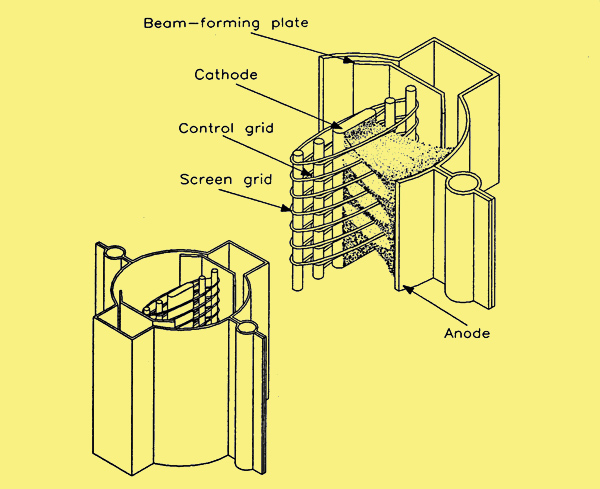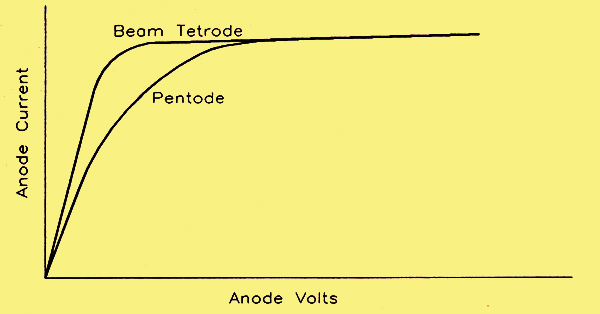|
The Beam Tetrode

Construction of a beam tetrode valve.
This valve offers an alternative solution to the problem of the 'tetrode kink', and the way in which it does it is by using a pair of beam forming plates instead of a suppressor grid. The construction of a beam tetrode is shown above.
The essential action is obtained by using a large anode-screen distance, and forming the electrons in transit from cathode to anode into two well defined, high density beams or sheets. As a result, there is the effect of a large 'space charge' in existence between screen and anode which, being highly negatively charged, will tend to repel any secondary electrons emitted by either of these two electrodes. This potential minimum between screen grid and anode effectively behaves like a suppressor grid. The beams are formed, by repulsion, by the two plates shown, which are connected internally to the cathode. See also The Beam Tetrode.

Comparison of the anode characteristics of pentodes and beam tetrodes.
The behaviour of the beam tetrode is much the same as that of the pentode, but there is one essential difference. This is seen in the anode characteristics shown above. The transition between the regions where anode current depends upon anode voltage and where it is independent of anode voltage is very much more abrupt than in the case of the pentode. This is very useful where large undistorted signal swings are required, as is the case with power amplifiers. As a result, the output stages of Hi-Fi audio amplifiers frequently use beam tetrodes instead of pentodes. However, this is often not evident since it has been quite common practice in the past to treat beam tetrodes as if they were pentodes, especially when it comes to applying circuit symbols to them, so that often only direct reference to manufacturer's literature will determine what particular valve actually is.
Even more confusing, however, is the so called 'beam pentode' (such as GEC's KT55, KT66 and KT88 series), but all that's happening here is that the suppressor grid has been 'developed' into a pair of beam forming plates in order to give the device the sharp-cornered curve of the tetrode, and hence a large signal swing capability. It's practically indistinguishable from a beam tetrode in construction. Such exotic devices are nearly always power output valves and very unlikely to be small signal devices.
|